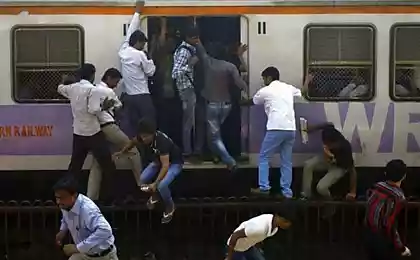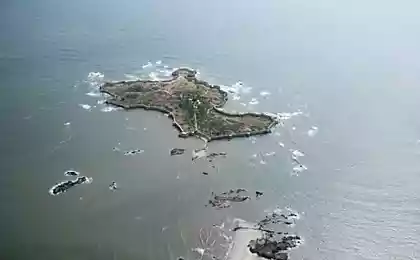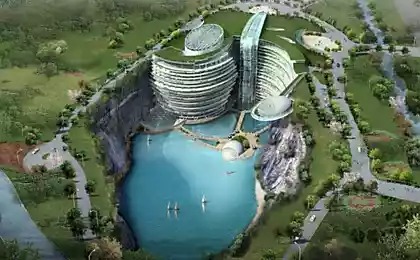1110
Mumbai
Mumbai - a city in the west of India, on the Arabian Sea coast, which is the most populated in the state.
As part of his trip to Asia, a well-known blogger raskalov tell you about the largest city in India and of course show great pictures from the roof of his skyscrapers. University of Mumbai. Gorgeous example of beautiful architecture built during the colonization of India.
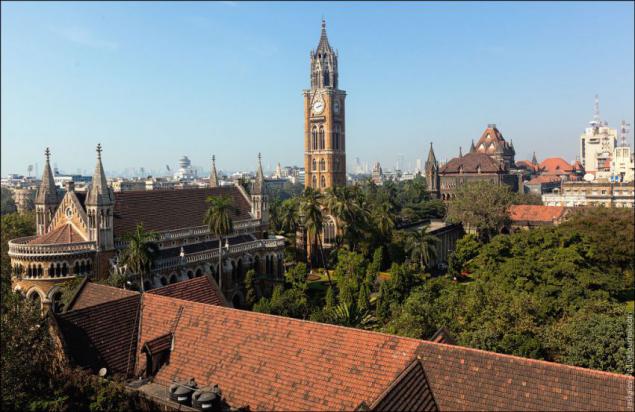
Ambassador's residence.


The campus of the University of Mumbai and a huge playground for cricket in the city center.

Cricket - the most popular sport in the city, but played many residents. The city has two international stadium for cricket - "Vankhid" and "Braburn." Football - the second most popular sport. Mumbai Marathon is held annually.

Chhatrapati Shivaji Terminus, to Him we shall return and examine it in more detail.
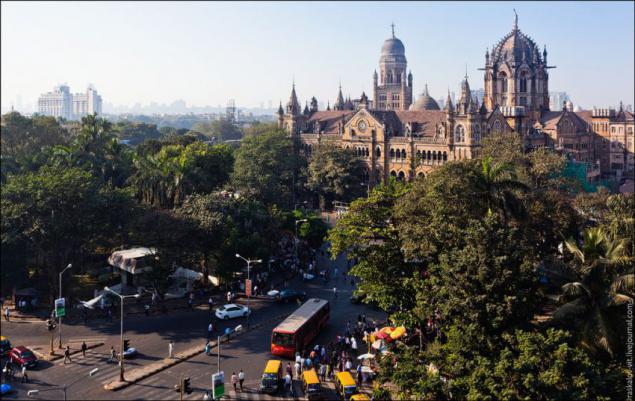
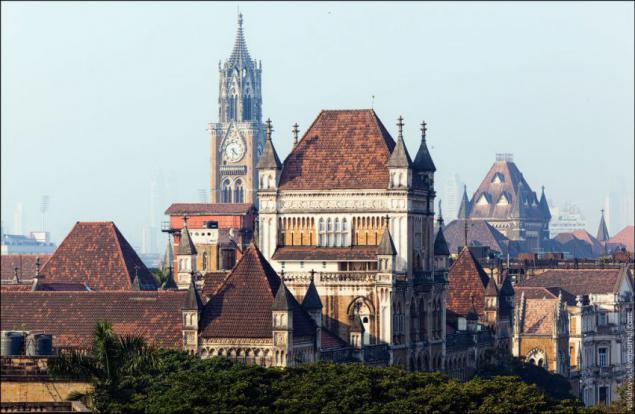
From the roof of the Mumbai's all very difficult. The reason is that, in every section of a residential / office building sits guard and get through it is often very difficult, they talk only in Hindi and something to explain to them almost impossible. But that's not all roofs are often whole families can live, which are as glad to see you at home.

Pier Mumbai: Left Arabian Sea on the horizon one can see skyscrapers in the business center of the city.
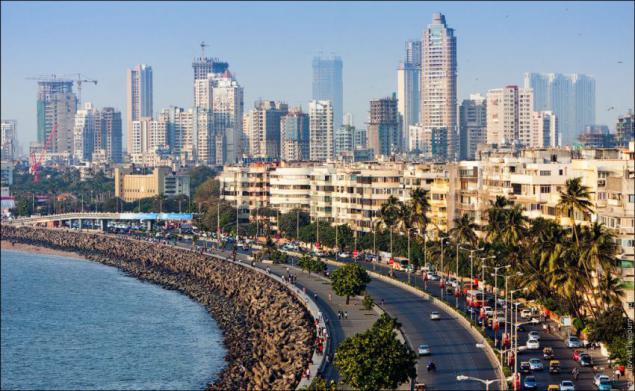
Gateway of India - basalt arch in the Indo-Saracenic style with details typical of Gujarati architecture, which was founded on the seafront in Bombay in honor of the coronation of King George V's visit in December 1911 view from the roof of the hotel Taj Mahal. Because of a series of terrorist attacks difficult to get to the gate, the weekend should be a decent place to defend the length of several hundred meters, something to pass through metal detectors.

Arabian Sea.

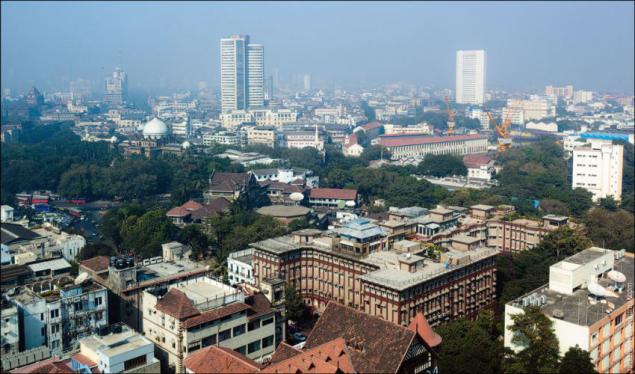
Downtown, in the background one can see the high-rise at the station Mumbai Central.

One such high-rises - a five-star hotel. A unique place, on the one hand surrounded by slums, with another under construction skyscrapers of the business district of Mumbai.
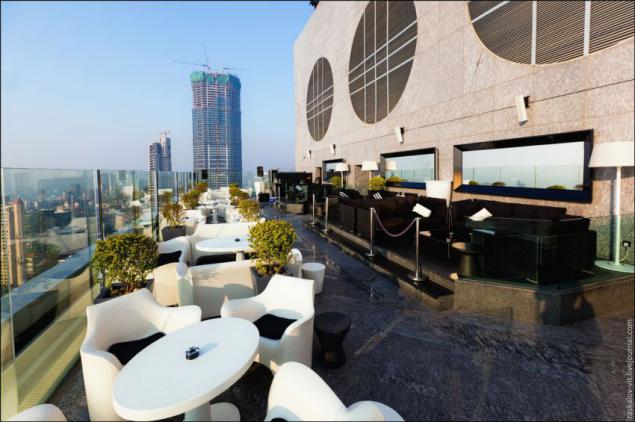
In the restaurant we unfortunately are not allowed, the dress code is not passed, this had to climb onto the roof.

The height of the hotel more than 130 meters, one of the 20 tallest buildings in Mumbai.

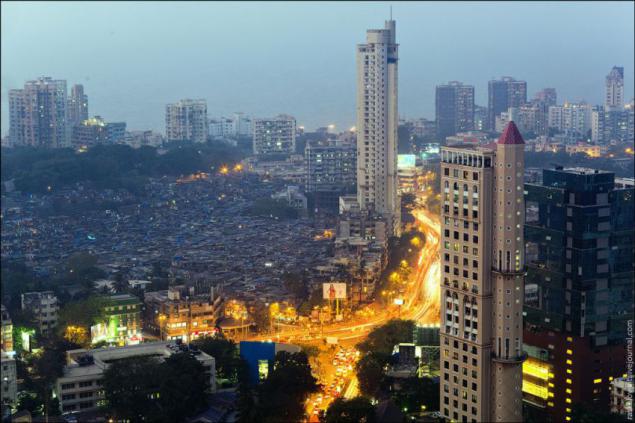
People burn garbage on the outskirts of the slum. Here's a cool kind of offer residents five-star hotel.

On one side of the slums on the other rapidly growing business center. Chic contrasts.


ppodrom and skyscrapers near Mahalaxmi.



Peninsula Business Park Station at Lower Parel.
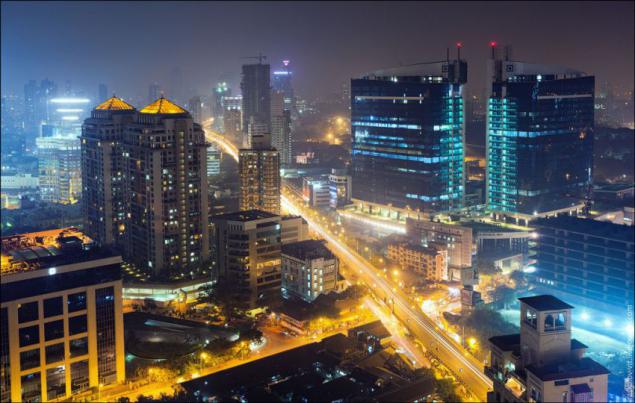
Imperial Towers in Mumbai Central area.


Imperial - high-rise complex, which is a pair of towers of skyscrapers in the city of Mumbai. The height of the tower - 240 meters. The tallest building in the city

Palais Royale - on completion of construction it will be the tallest skyscraper in Mumbai. The height of 320 meters. Our attempts to get on the construction site at night, was defeated in the rare Indians are good at guard its buildings, such as the first time I saw something to the barbed wire on the fence construction has been communicated to electricity.


Playground on the roof of one of the houses near Mumbai Central.
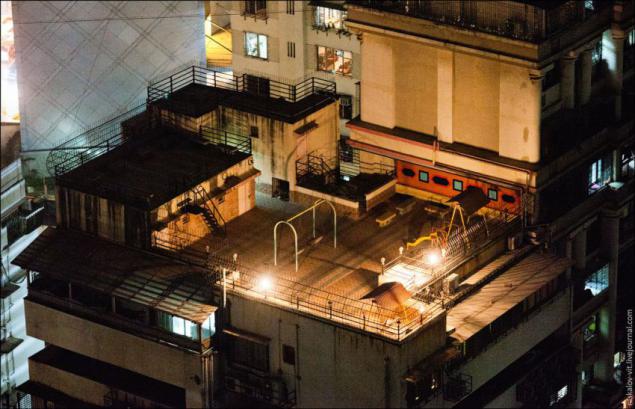
Chhatrapati Shivaji Terminus - one of the busiest railway stations in India. As the largest airport in India, is named after the national hero of India, Chhatrapati Shivaji.

The station building is an extremely intricate, even pretentious, the combination of traditional Victorian neo-Gothic architecture with motifs of Indo-Saracenic style (stone dome, turrets, pointed arches and complexity; the plan). The station is a symbol of Mumbai as a major international trading port in India. In 2004, the station was included in the World Heritage List.

Get on the roof of the station in the afternoon - it is practically impossible, for this we had to wade there at night while we were sleeping policemen with Nastya on scaffolding climbed to one of the sections of the station building, and there has got to the dome.

Inside the station is decorated with wood carvings, iron and brass railings, the main staircase is made with a balustrade.


Unfortunately the city at night saves on lighting, and except for a few shots there is nothing to shoot.

In the city there is no subway, on the huge number of people use the train, they go to the city center almost every 2-3 minutes. During rush hour times are such a crush that you literally carried out of the car.

Dharavi, Mumbai in the Indian district, became the "backdrop" for the film "Slumdog Millionaire." Dharavi - is the largest slum in Asia, is home to more than 1 million people.

The traffic at the Mahim station Dzhunktion.


In Dharavi live more than one million people. Such densely populated slum is no longer anywhere in Asia. There are schools, churches, mosques, bakeries, manufacturing, factory, and of course, a huge garbage. In the slums are not only bachelors, but also a lot of families. Often in the same house area of 10-11 square meters of living three generations, that is, 8-10 people. In the slums there are schools, both private and public. In a private school education is paid, is about 200 -300 rupees a month, or 4-6 dollars.

Stay here in this house can be 3-5 dollars a month.
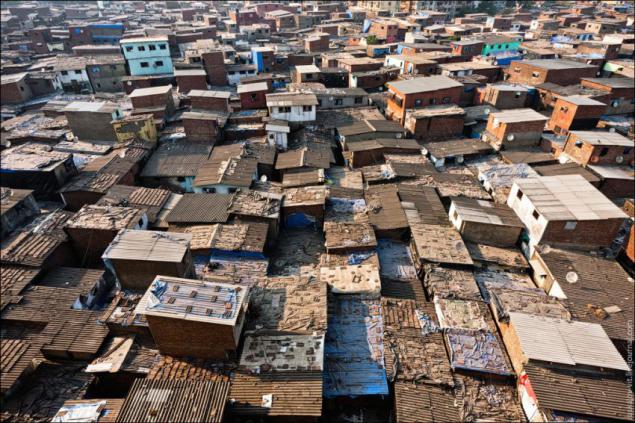
Most of the population of Mumbai caste "untouchables". The Untouchables are not included in the four castes. They are considered to be able to desecrate the members of the higher castes, particularly the Brahmins. Untouchables are divided into traditional activities of their representatives, as well as areas where they live. The most common category of untouchables - Chamars (tanners), Dhobi (washerwomen), Dalits.

Inside the slum is happening is a real tin, running around children, livestock and range of a lot of garbage. A foreigner who has come into the heart of this area, it is very rare, this one child or adult feels obliged to say hello or just walk over you.
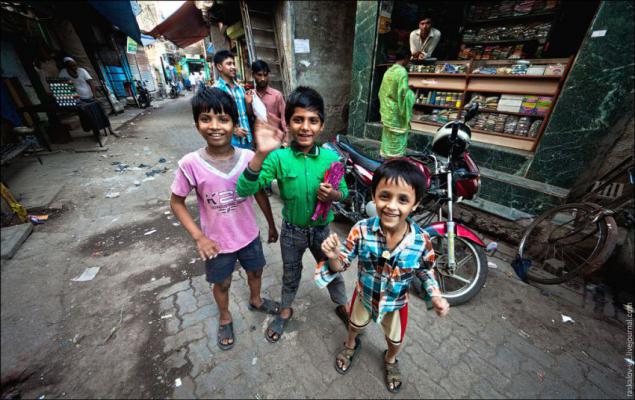
The settlement near the station Mahim-Dzhunktion.

Thus ended Mumbai.

Source: raskalov-vit.livejournal.com
As part of his trip to Asia, a well-known blogger raskalov tell you about the largest city in India and of course show great pictures from the roof of his skyscrapers. University of Mumbai. Gorgeous example of beautiful architecture built during the colonization of India.

Ambassador's residence.


The campus of the University of Mumbai and a huge playground for cricket in the city center.

Cricket - the most popular sport in the city, but played many residents. The city has two international stadium for cricket - "Vankhid" and "Braburn." Football - the second most popular sport. Mumbai Marathon is held annually.

Chhatrapati Shivaji Terminus, to Him we shall return and examine it in more detail.


From the roof of the Mumbai's all very difficult. The reason is that, in every section of a residential / office building sits guard and get through it is often very difficult, they talk only in Hindi and something to explain to them almost impossible. But that's not all roofs are often whole families can live, which are as glad to see you at home.

Pier Mumbai: Left Arabian Sea on the horizon one can see skyscrapers in the business center of the city.

Gateway of India - basalt arch in the Indo-Saracenic style with details typical of Gujarati architecture, which was founded on the seafront in Bombay in honor of the coronation of King George V's visit in December 1911 view from the roof of the hotel Taj Mahal. Because of a series of terrorist attacks difficult to get to the gate, the weekend should be a decent place to defend the length of several hundred meters, something to pass through metal detectors.

Arabian Sea.


Downtown, in the background one can see the high-rise at the station Mumbai Central.

One such high-rises - a five-star hotel. A unique place, on the one hand surrounded by slums, with another under construction skyscrapers of the business district of Mumbai.

In the restaurant we unfortunately are not allowed, the dress code is not passed, this had to climb onto the roof.

The height of the hotel more than 130 meters, one of the 20 tallest buildings in Mumbai.


People burn garbage on the outskirts of the slum. Here's a cool kind of offer residents five-star hotel.

On one side of the slums on the other rapidly growing business center. Chic contrasts.


ppodrom and skyscrapers near Mahalaxmi.



Peninsula Business Park Station at Lower Parel.

Imperial Towers in Mumbai Central area.


Imperial - high-rise complex, which is a pair of towers of skyscrapers in the city of Mumbai. The height of the tower - 240 meters. The tallest building in the city

Palais Royale - on completion of construction it will be the tallest skyscraper in Mumbai. The height of 320 meters. Our attempts to get on the construction site at night, was defeated in the rare Indians are good at guard its buildings, such as the first time I saw something to the barbed wire on the fence construction has been communicated to electricity.


Playground on the roof of one of the houses near Mumbai Central.

Chhatrapati Shivaji Terminus - one of the busiest railway stations in India. As the largest airport in India, is named after the national hero of India, Chhatrapati Shivaji.

The station building is an extremely intricate, even pretentious, the combination of traditional Victorian neo-Gothic architecture with motifs of Indo-Saracenic style (stone dome, turrets, pointed arches and complexity; the plan). The station is a symbol of Mumbai as a major international trading port in India. In 2004, the station was included in the World Heritage List.

Get on the roof of the station in the afternoon - it is practically impossible, for this we had to wade there at night while we were sleeping policemen with Nastya on scaffolding climbed to one of the sections of the station building, and there has got to the dome.

Inside the station is decorated with wood carvings, iron and brass railings, the main staircase is made with a balustrade.


Unfortunately the city at night saves on lighting, and except for a few shots there is nothing to shoot.

In the city there is no subway, on the huge number of people use the train, they go to the city center almost every 2-3 minutes. During rush hour times are such a crush that you literally carried out of the car.

Dharavi, Mumbai in the Indian district, became the "backdrop" for the film "Slumdog Millionaire." Dharavi - is the largest slum in Asia, is home to more than 1 million people.

The traffic at the Mahim station Dzhunktion.


In Dharavi live more than one million people. Such densely populated slum is no longer anywhere in Asia. There are schools, churches, mosques, bakeries, manufacturing, factory, and of course, a huge garbage. In the slums are not only bachelors, but also a lot of families. Often in the same house area of 10-11 square meters of living three generations, that is, 8-10 people. In the slums there are schools, both private and public. In a private school education is paid, is about 200 -300 rupees a month, or 4-6 dollars.

Stay here in this house can be 3-5 dollars a month.

Most of the population of Mumbai caste "untouchables". The Untouchables are not included in the four castes. They are considered to be able to desecrate the members of the higher castes, particularly the Brahmins. Untouchables are divided into traditional activities of their representatives, as well as areas where they live. The most common category of untouchables - Chamars (tanners), Dhobi (washerwomen), Dalits.

Inside the slum is happening is a real tin, running around children, livestock and range of a lot of garbage. A foreigner who has come into the heart of this area, it is very rare, this one child or adult feels obliged to say hello or just walk over you.

The settlement near the station Mahim-Dzhunktion.

Thus ended Mumbai.

Source: raskalov-vit.livejournal.com

